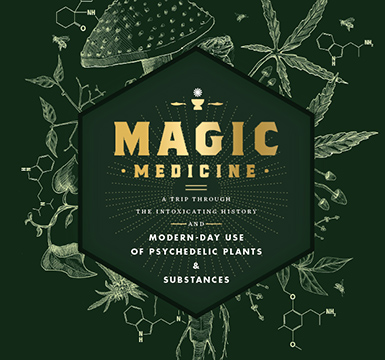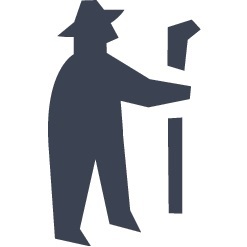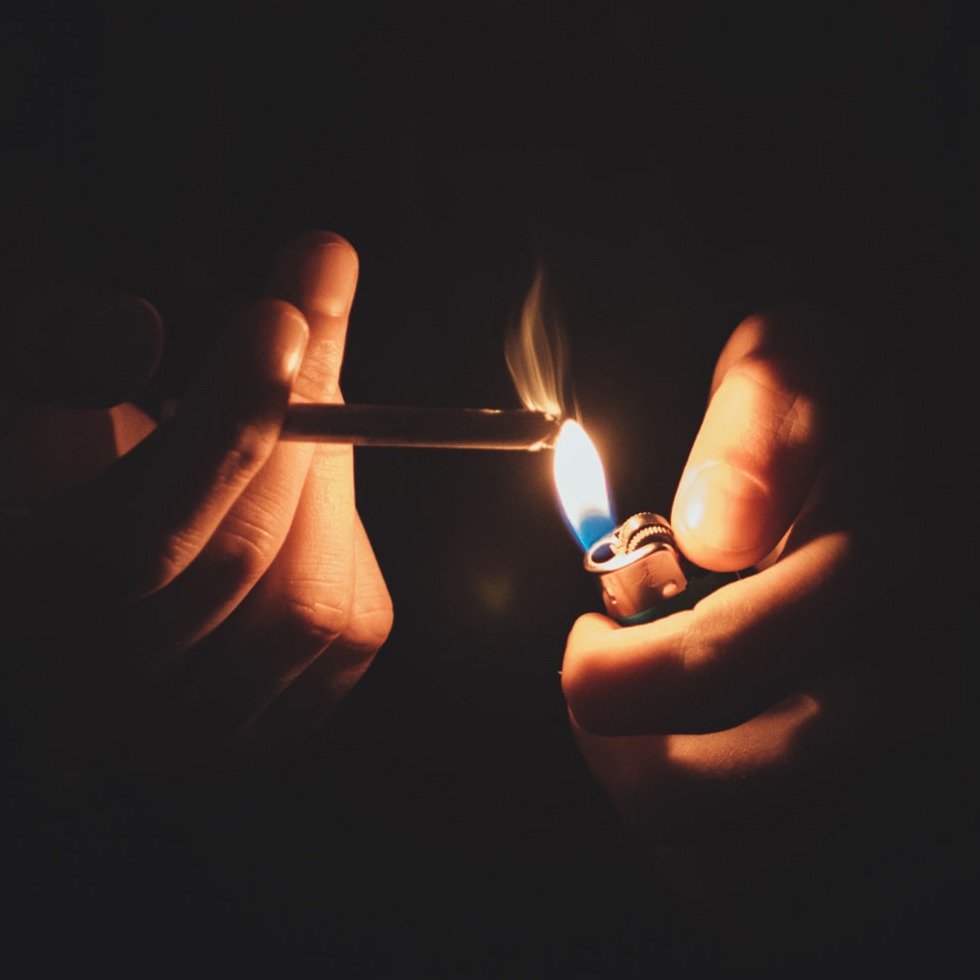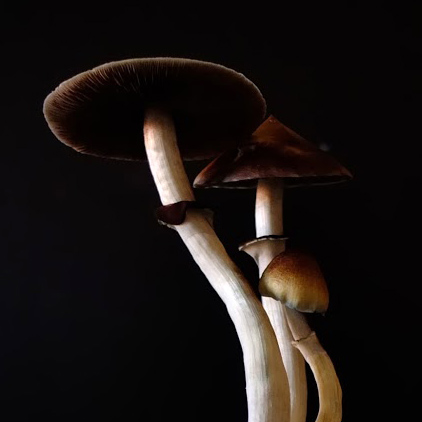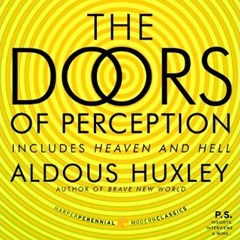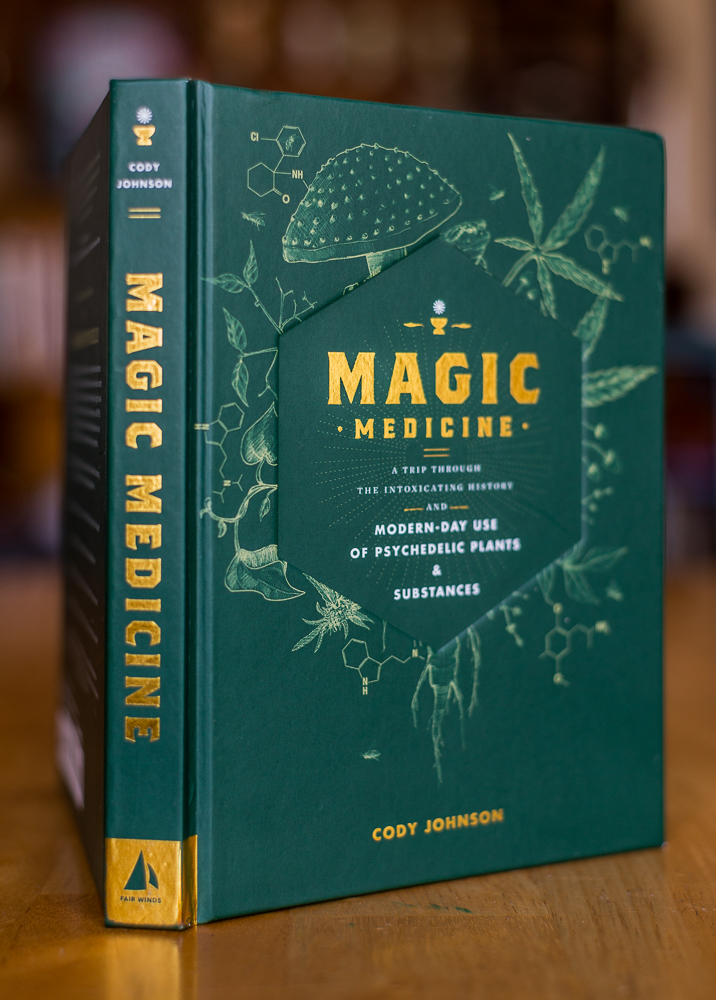Want your own copy? The paperback is available on Amazon.
None too soon, I was steered away from the disquieting splendors of my garden chair. Drooping in green parabolas from the hedge, the ivy fronds shone with a kind of glassy, jade-like radiance. A moment later a clump of Red Hot Pokers, in full bloom, had exploded into my field of vision. So passionately alive that they seemed to be standing on the very brink of utterance, the flowers strained upwards into the blue. Like the chair under the laths, they protected too much. I looked down at the leaves and discovered a cavernous intricacy of the most delicate green lights and shadows, pulsing with undecipherable mystery.
We walked out into the street. A large pale blue automobile was standing at the curb. At the sight of it, I was suddenly overcome by enormous merriment. What complacency, what an absurd self-satisfaction beamed from those bulging surfaces of glossiest enamel! Man had created the thing in his own image–or rather in the image of his favorite character in fiction. I laughed till the tears ran down my cheeks.
We re-entered the house. A meal had been prepared. Somebody, who was not yet identical with myself, fell to with ravenous appetite. From a considerable distance and without much interest, I looked on.
When the meal had been eaten, we got into the car and went for a drive. The effects of the mescalin were already on the decline: but the flowers in the gardens still trembled on the brink of being supernatural, the pepper trees and carobs along the side streets still manifestly belonged to some sacred grove. Eden alternated with Dodona. Yggdrasil with the mystic Rose. And then, abruptly, we were at an intersection, waiting to cross Sunset Boulevard. Before us the cars were rolling by in a steady stream–thousands of them, all bright and shiny like an advertiser’s dream and each more ludicrous than the last. Once again I was convulsed with laughter.
The Red Sea of traffic parted at last, and we crossed into another oasis of trees and lawns and roses. In a few minutes we had climbed to a vantage point in the hills, and there was the city spread out beneath us. Rather disappointingly, it looked very like the city I had seen on other occasions. So far as I was concerned, transfiguration was proportional to distance. The nearer, the more divinely other. This vast, dim panorama was hardly different from itself.
We drove on, and so long as we remained in the hills, with view succeeding distant view, significance was at its everyday level, well below transfiguration point. The magic began to work again only when we turned down into a new suburb and were gliding between two rows of houses. Here, in spite of the peculiar hideousness of the architecture, there were renewals of transcendental otherness, hints of the morning’s heaven. Brick chimneys and green composition roofs glowed in the sunshine, like fragments of the New Jerusalem. And all at once I saw what Guardi had seen and (with what incomparable skill) had so often rendered in his paintings–a stucco wall with a shadow slanting across it, blank but unforgettably beautiful, empty but charged with all the meaning and the mystery of existence. The revelation dawned and was gone again within a fraction of a second. The car had moved on; time was uncovering another manifestation of the eternal Suchness. “Within sameness there is difference. But that difference should be different from sameness is in no wise the intention of all the Buddhas. Their intention is both totality and differentiation.” This bank of red and white geraniums, for example–it was entirely different from that stucco wall a hundred yards up the road. But the “is-ness” of both was the same, the eternal quality of their transience was the same.
An hour later, with ten more miles and the visit to the World’s Biggest Drug Store safely behind us, we were back at home, and I had returned to that reassuring but profoundly unsatisfactory state known as “being in one’s right mind.”
That humanity at large will ever be able to dispense with Artificial Paradises seems very unlikely. Most men and women lead lives at the worst so painful, at the best so monotonous, poor and limited that the urge to escape, the longing to transcend themselves if only for a few moments, is and has always been one of the principal appetites of the soul. Art and religion, carnivals and saturnalia, dancing and listening to oratory–all these have served, in H. G. Wells’s phrase, as Doors in the Wall. And for private, far everyday use there have always been chemical intoxicants. All the vegetable sedatives and narcotics, all the euphorics that grow on trees, the hallucinogens that ripen in berries or can be squeezed from roots–all, without exception, have been known and systematically used by human beings from time immemorial. And to these natural modifiers of consciousness modern science has added its quota of synthetics–chloral, for example, and benzedrine, the bromides and the barbiturates.
Most of these modifiers of consciousness cannot now be taken except under doctor’s orders, or else illegally and at considerable risk. For unrestricted use the West has permitted only alcohol and tobacco. All the other chemical Doors in the Wall are labeled Dope, and their unauthorized takers are Fiends.
We now spend a good deal more on drink and smoke than we spend on education. This, of course, is not surprising. The urge to escape from selfhood and the environment is in almost everyone almost all the time. The urge to do something for the young is strong only in parents, and in them only for the few years during which their children go to school. Equally unsurprising is the current attitude towards drink and smoke. In spite of the growing army of hopeless alcoholics, in spite of the hundreds of thousands of persons annually maimed or killed by drunken drivers, popular comedians still crack jokes about alcohol and its addicts. And in spite of the evidence linking cigarettes with lung cancer, practically everybody regards tobacco smoking as being hardly less normal and natural than eating. From the point of view of the rationalist utilitarian this may seem odd. For the historian, it is exactly what you would expect. A firm conviction of the material reality of Hell never prevented medieval Christians from doing what their ambition, lust or covetousness suggested. Lung cancer, traffic accidents and the millions of miserable and misery-creating alcoholics are facts even more certain than was, in Dante’s day, the fact of the Inferno. But all such facts are remote and unsubstantial compared with the near, felt fact of a craving, here and now, for release or sedation, for a drink or a smoke.
Ours is the age, among other things, of the automobile and of rocketing population. Alcohol is incompatible with safety on the roads, and its production, like that of tobacco, condemns to virtual sterility many millions of acres of the most fertile soil. The problems raised by alcohol and tobacco cannot, it goes without saying, be solved by prohibition. The universal and ever-present urge to self-transcendence is not to be abolished by slamming the currently popular Doors in the Wall. The only reasonable policy is to open other, better doors in the hope of inducing men and women to exchange their old bad habits for new and less harmful ones. Some of these other, better doors will be social and technological in nature, others religious or psychological, others dietetic, educational, athletic. But the need for frequent chemical vacations from intolerable selfhood and repulsive surroundings will undoubtedly remain. What is needed is a new drug which will relieve and console our suffering species without doing more harm in the long run than it does good in the short. Such a drug must be potent in minute doses and synthesizable. If it does not possess these qualities, its production, like that of wine, beer, spirits and tobacco will interfere with the raising of indispensable food and fibers. It must be less toxic than opium or cocaine, less likely to produce undesirable social consequences than alcohol or the barbiturates, less inimical to heart and lungs than the tars and nicotine of cigarettes. And, on the positive side, it should produce changes in consciousness more interesting, more intrinsically valuable than mere sedation or dreaminess, delusions of omnipotence or release from inhibition.
To most people, mescalin is almost completely innocuous. Unlike alcohol, it does not drive the taker into the kind of uninhibited action which results in brawls, crimes of violence and traffic accidents. A man under the influence of mescalin quietly minds his own business. Moreover, the business he minds is an experience of the most enlightening kind, which does not have to be paid for (and this is surely important) by a compensatory hangover. Of the long-range consequences of regular mescalin taking we know very little. The Indians who consume peyote buttons do not seem to be physically or morally degraded by the habit. However, the available evidence is still scarce and sketchy.* Although obviously superior to cocaine, opium, alcohol and tobacco, mescalin is not yet the ideal drug. Along with the happily transfigured majority of mescalin takers there is a minority that finds in the drug only hell or purgatory. Moreover, for a drug that is to be used, like alcohol, for general consumption, its effects last for an inconveniently long time. But chemistry and physiology are capable nowadays of practically anything. If the psychologists and sociologists will define the ideal, the neurologists and pharmacologists can be relied upon to discover the means whereby that ideal can be realized or at least (for perhaps this kind of ideal can never, in the very nature of things, be fully realized) more nearly approached than in the wine-bibbing past, the whisky- drinking, marijuana-smoking and barbiturate-swallowing present.
The urge to transcend self-conscious selfhood is, as I have said, a principal appetite of the soul. When, for whatever reason, men and women fail to transcend themselves by means of worship, good works and spiritual exercises, they are apt to resort to religion’s chemical surrogates-alcohol and “goof pills” in the modern West, alcohol and opium in the East, hashish in the Mohammedan world, alcohol and marijuana in Central America, alcohol and coca in the Andes, alcohol and the barbiturates in the more up-to-date regions of South America. In Poisons Sacres, Ivresses Divines Philippe de Felice has written at length and with a wealth of documentation on the immemorial connection between religion and the taking of drugs. Here, in summary or in direct quotation, are his conclusions. The employment for religious purposes of toxic substances is “extraordinarily widespread…. The practices studied in this volume can be observed in every region of the earth, among primitives no less than among those who have reached a high pitch of civilization. We are therefore dealing not with exceptional facts, which might justifiably be overlooked, but with a general and, in the widest sense of the word, a human phenomenon, the kind of phenomenon which cannot be disregarded by anyone who is trying to discover what religion is, and what are the deep needs which it must satisfy.”
Ideally, everyone should be able to find self-transcendence in some form of pure or applied religion. In practice it seems very unlikely that this hoped for consummation will ever be realized. There are, and doubtless there always will be, good churchmen and good churchwomen for whom, unfortunately, piety is not enough. The late G. K. Chesterton, who wrote at least as lyrically of drink as of devotion, may serve as their eloquent spokesman.
The modern churches, with some exceptions among the Protestant denominations, tolerate alcohol; but even the most tolerant have made no attempt to convert the drug to Christianity, or to sacramentalize its use. The pious drinker is forced to take his religion in one compartment, his religion-surrogate in another. And perhaps this is inevitable. Drinking cannot be sacramentalized except in religions which set no store on decorum. The worship of Dionysos or the Celtic god of beer was a loud and disorderly affair. The rites of Christianity are incompatible with even religious drunkenness. This does no harm to the distillers, but is very bad for Christianity. Countless persons desire self-transcendence and would be glad to find it in church. But, alas, “the hungry sheep look up and are not fed.” They take part in rites, they listen to sermons, they repeat prayers; but their thirst remains unassuaged. Disappointed, they turn to the bottle. For a time at least and in a kind of way, it works. Church may still be attended; but it is no more than the Musical Bank of Butler’s Erewhon. God may still be acknowledged; but He is God only on the verbal level, only in a strictly Pickwickian sense. The effective object of worship is the bottle and the sole religious experience is that state of uninhibited and belligerent euphoria which follows the ingestion of the third cocktail.
We see, then, that Christianity and alcohol do not and cannot mix. Christianity and mescalin seem to be much more compatible. This has been demonstrated by many tribes of Indians, from Texas to as far north as Wisconsin. Among these tribes are to be found groups affiliated with the Native American Church, a sect whose principal rite is a kind of Early Christian agape, or love feast, where slices of peyote take the place of the sacramental bread and wine. These Native Americans regard the cactus as God’s special gift to the Indians, and equate its effects with the workings of the divine Spirit.
Professor J. S. Slotkin, one of the very few white men ever to have participated in the rites of a Peyotist congregation, says of his fellow worshipers that they are “certainly not stupefied or drunk…. They never get out of rhythm or fumble their words, as a drunken or stupefied man would do…. They are all quiet, courteous and considerate of one another. I have never been in any white man’s house of worship where there is either so much religious feeling or decorum.” And what, we may ask, are these devout and well-behaved Peyotists experiencing? Not the mild sense of virtue which sustains the average Sunday churchgoer through ninety minutes of boredom. Not even those high feelings, inspired by thoughts of the Creator and the Redeemer, the Judge and the Comforter, which animate the pious. For these Native Americans, religious experience is something more direct and illuminating, more spontaneous, less the homemade product of the superficial, self-conscious mind. Sometimes (according to the reports collected by Dr. Slotkin) they see visions, which may be of Christ Himself. Sometimes they hear the voice of the Great Spirit. Sometimes they become aware of the presence of God and of those personal shortcomings which must be corrected if they are to do His will. The practical consequences of these chemical openings of doors into the Other World seem to be wholly good. Dr. Slotkin reports that habitual Peyotists are on the whole more industrious, more temperate (many of them abstain altogether from alcohol), more Peaceable than non-Peyotists. A tree with such satisfactory fruits cannot be condemned out of hand as evil.
In sacramentalizing the use of peyote, the Indians of the Native American Church have done something which is at once psychologically sound and historically respectable. In the early centuries of Christianity many pagan rites and festivals were baptized, so to say, and made to serve the purposes of the Church. These jollifications were not particularly edifying; but they assuaged a certain psychological hunger and, instead of trying to suppress them, the earlier missionaries had the sense to accept them for what they were, soul-satisfying expressions of fundamental urges, and to incorporate them into the fabric of the new religion. What the Native Americans have done is essentially similar. They have taken a pagan custom (a custom, incidentally, far more elevating and enlightening than most of the rather brutish carousals and mummeries adopted from European paganism) and given it a Christian significance.
Though but recently introduced into the northern United States, peyote-eating and the religion based upon it have become important symbols of the red man’s right to spiritual independence. Some Indians have reacted to white supremacy by becoming Americanized, others by retreating into traditional Indianism. But some have tried to make the best of both worlds, indeed of all the worlds–the best of Indianism, the best of Christianity, and the best of those Other Worlds of transcendental experience, where the soul knows itself as unconditioned and of like nature with the divine. Hence the Native American Church. In it two great appetites of the soul– the urge to independence and self-determination and the urge to self-transcendence-were fused with, and interpreted in the light of, a third–the urge to worship, to justify the ways of God to man, to explain the universe by means of a coherent theology.
Lo, the poor Indian, whose untutored mindClothes him in front, but leaves him bare behind.
But actually it is we, the rich and highly educated whites, who have left ourselves bare behind. We cover our anterior nakedness with some philosophy-Christian, Marxian, Freudo-Physicalist-but abaft we remain uncovered, at the mercy of all the winds of circumstance. The poor Indian, on the other hand, has had the wit to protect his rear by supplementing the fig leaf of a theology with the breechclout of transcendental experience.
I am not so foolish as to equate what happens under the influence of mescalin or of any other drug, prepared or in the future preparable, with the realization of the end and ultimate purpose of human life: Enlightenment, the Beatific Vision. All I am suggesting is that the mescalin experience is what Catholic theologians call “a gratuitous grace,” not necessary to salvation but potentially helpful and to be accepted thankfully, if made available. To be shaken out of the ruts of ordinary perception, to be shown for a few timeless hours the outer and the inner world, not as they appear to an animal obsessed with survival or to a human being obsessed with words and notions, but as they are apprehended, directly and unconditionally, by Mind at Large–this is an experience of inestimable value to everyone and especially to the intellectual. For the intellectual is by definition the man for whom, in Goethe’s phrase, “the word is essentially fruitful.” He is the man who feels that “what we perceive by the eye is foreign to us as such and need not impress us deeply.” And yet, though himself an intellectual and one of the supreme masters of language, Goethe did not always agree with his own evaluation of the word. “We talk,” he wrote in middle life, “far too much. We should talk less and draw more. I personally should like to renounce speech altogether and, like organic Nature, communicate everything I have to say in sketches. That fig tree, this little snake, the cocoon on my window sill quietly awaiting its future-all these are momentous signatures. A person able to decipher their meaning properly would soon be able to dispense with the written or the spoken word altogether. The more I think of it, there is something futile, mediocre, even (I am tempted to say) foppish about speech. By contrast, how the gravity of Nature and her silence startle you, when you stand face to face with her, undistracted, before a barren ridge or in the desolation of the ancient hills.” We can never dispense with language and the other symbol systems; for it is by means of them, and only by their means, that we have raised ourselves above the brutes, to the level of human beings. But we can easily become the victims as well as the beneficiaries of these systems. We must learn how to handle words effectively; but at the same time we must preserve and, if necessary, intensify our ability to look at the world directly and not through that half opaque medium of concepts, which distorts every given fact into the all too familiar likeness of some generic label or explanatory abstraction.
Literary or scientific, liberal or specialist, all our education is predominantly verbal and therefore fails to accomplish what it is supposed to do. Instead of transforming children into fully developed adults, it turns out students of the natural sciences who are completely unaware of Nature as the primary fact of experience, it inflicts upon the world students of the humanities who know nothing of humanity, their own or anyone else’s.
Gestalt psychologists, such as Samuel Renshaw, have devised methods for widening the range and increasing the acuity of human perceptions. But do our educators apply them? The answer is, No.
Teachers in every field of psyche-physical skill, from seeing to tennis, from tightrope walking to prayer, have discovered, by trial and error, the conditions of optimum functioning within their special fields. But have any of the great Foundations financed a project for co-ordinating these empirical findings into a general theory and practice of heightened creativeness? Again, so far as I am aware, the answer is, No.
All sorts of cultists and queer fish teach all kinds of techniques for achieving health, contentment, peace of mind; and for many of their hearers many of these techniques are demonstrably effective. But do we see respectable psychologists, philosophers and clergymen boldly descending into those odd and sometimes malodorous wells, at the bottom of which poor Truth is so often condemned to sit? Yet once more the answer is, No.
And now look at the history of mescalin research. Seventy years ago men of first-rate ability described the transcendental experiences which come to those who, in good health, under proper conditions and in the right spirit, take the drug. How many philosophers, how many theologians, how many professional educators have had the curiosity to open this Door in the Wall? The answer, for all practical purposes, is, None.
In a world where education is predominantly verbal, highly educated people find it all but impossible to pay serious attention to anything but words and notions. There is always money for, there are always doctorates in, the learned foolery of research into what, for scholars, is the all-important problem: Who influenced whom to say what when? Even in this age of technology the verbal humanities are honored. The non-verbal humanities, the arts of being directly aware of the given facts of our existence, ale almost completely ignored. A catalogue, a bibliography, a definitive edition of a third-rate versier’s ipsissima verba, a stupendous index to end all indexes-any genuinely Alexandrian project is sure of approval and financial support: But when it comes to finding out how you and I, our children and grandchildren, may become more perceptive, more intensely aware of inward and outward reality, more open to the Spirit, less apt, by psychological malpractices, to make ourselves physically ill, and more capable of controlling our own autonomic nervous system–when it comes to any form of non-verbal education more fundamental (and more likely to be of some practical use) than Swedish drill, no really respectable person in any really respectable university or church will do anything about it. Verbalists are suspicious of the non-verbal; rationalists fear the given, non-rational fact; intellectuals feel that “what we perceive by the eye (or in any other way) is foreign to us as such and need not impress us deeply.” Besides, this malter of education in the non-verbal humanities will not fit into any of the established pigeonholes. It is not religion, not neurology, not gymnastics, not morality or civics, not even experimental psychology. This being so the subject is, for academic and ecclesiastical purposes, non-existent and may safely be ignored altogether or left, with a Patronizing smile, to those whom the Pharisees of verbal orthodoxy call cranks, quacks, charlatans and unqualified amateurs.
“I have always found,” Blake wrote rather bitterly, “that Angels have the vanity to speak of themselves as the only wise. This they do with a confident insolence sprouting from systematic reasoning.”
Systematic reasoning is something we could not, as a species or as individuals, possibly do without. But neither, if we are to remain sane, can we possibly do without direct perception, the more unsystematic the better, of the inner and outer worlds into which we have been born. This given reality is an infinite which passes all understanding and yet admits of being directly and in some sort totally apprehended. It is a transcendence belonging to another order than the human, and yet it may be present to us as a felt immanence, an experienced participation. To be enlightened is to be aware, always, of total reality in its immanent otherness-to be aware of it and yet to remain in a condition to survive as an animal, to think and feel as a human being, to resort whenever expedient to systematic reasoning. Our goal is to discover that we have always been where we ought to be. Unhappily we make the task exceedingly difficult for ourselves. Meanwhile, however, there are gratuitous graces in the form of partial and fleeting realizations. Under a more realistic, a less exclusively verbal system of education than ours, every Angel (in Blake’s sense of that word) would be permitted as a sabbatical treat, would be urged and even, if necessary, compelled to take an occasional trip through some chemical Door in the Wall into the world of transcendental experience. If it terrified him, it would be unfortunate but probably salutary. If it brought him a brief but timeless illumination, so much the better. In either case the Angel might lose a little of the confident insolence sprouting from systematic reasoning and the consciousness of having read all the books.
Near the end of his life Aquinas experienced Infused Contemplation. Thereafter he refused to go back to work on his unfinished book. Compared with this, everything he had read and argued about and written–Aristotle and the Sentences, the Questions, the Propositions, the majestic Summas-was no better than chaff or straw, For most intellectuals such a sit-down strike would be inadvisable, even morally wrong. But the Angelic Doctor had done more systematic reasoning than any twelve ordinary Angels, and was already ripe for death. He had earned the right, in those last months of his mortality, to turn away from merely symbolic straw and chaff to the bread of actual and substantial Fact. For Angels of a lower order and with better prospects of longevity, there must be a return to the straw. But the man who comes back through the Door in the Wall will never be quite the same as the man who went out. He will be wiser but less cocksure, happier but less self-satisfied, humbler in acknowledging his ignorance yet better equipped to understand the relationship of words to things, of systematic reasoning to the unfathomable Mystery which it tries, forever vainly, to comprehend.
*In his monograph, Menomini Peyolism, published (December 1952) in the Transactions of the American Philosophical Society, Professor J. S. Slotkin has written that “the habitual use of Peyote does not seem to produce any increased tolerance or dependence. I know many people who have been Peyotists for forty to fifty years. The amount of Peyote they use depends upon the solemnity of the occasion; in general they do not take any more Peyote now than they did years ago. Also, there is sometimes an interval of a month or more between rites, and they go without Peyote during this period without feeling any craving for it. Personally, even after a series of rites occurring on four successive weekends. I neither increased the amount of Peyote consumed nor felt any continued need for it.” It is evidently with good reason that “Peyote has never been legally declared a narcotic, or its use prohibited by the federal government.” However, “during the long history of Indian-white contact, white offcials have usually tried to suppress the use of Peyote, because it has been conceived to violate their own mores. But these attempts have always failed.” In a footnote Dr. Slotkin adds that “it is amazing to hear the fantastic stories about the effects of Peyote and the nature of the ritual, which are told by the white and Catholic Indian officials in the Menomini Reservation. None of them have had the slightest first-hand experience with the plant or with the religion, yet some fancy themselves to be authorities and write official reports on the subject.”

